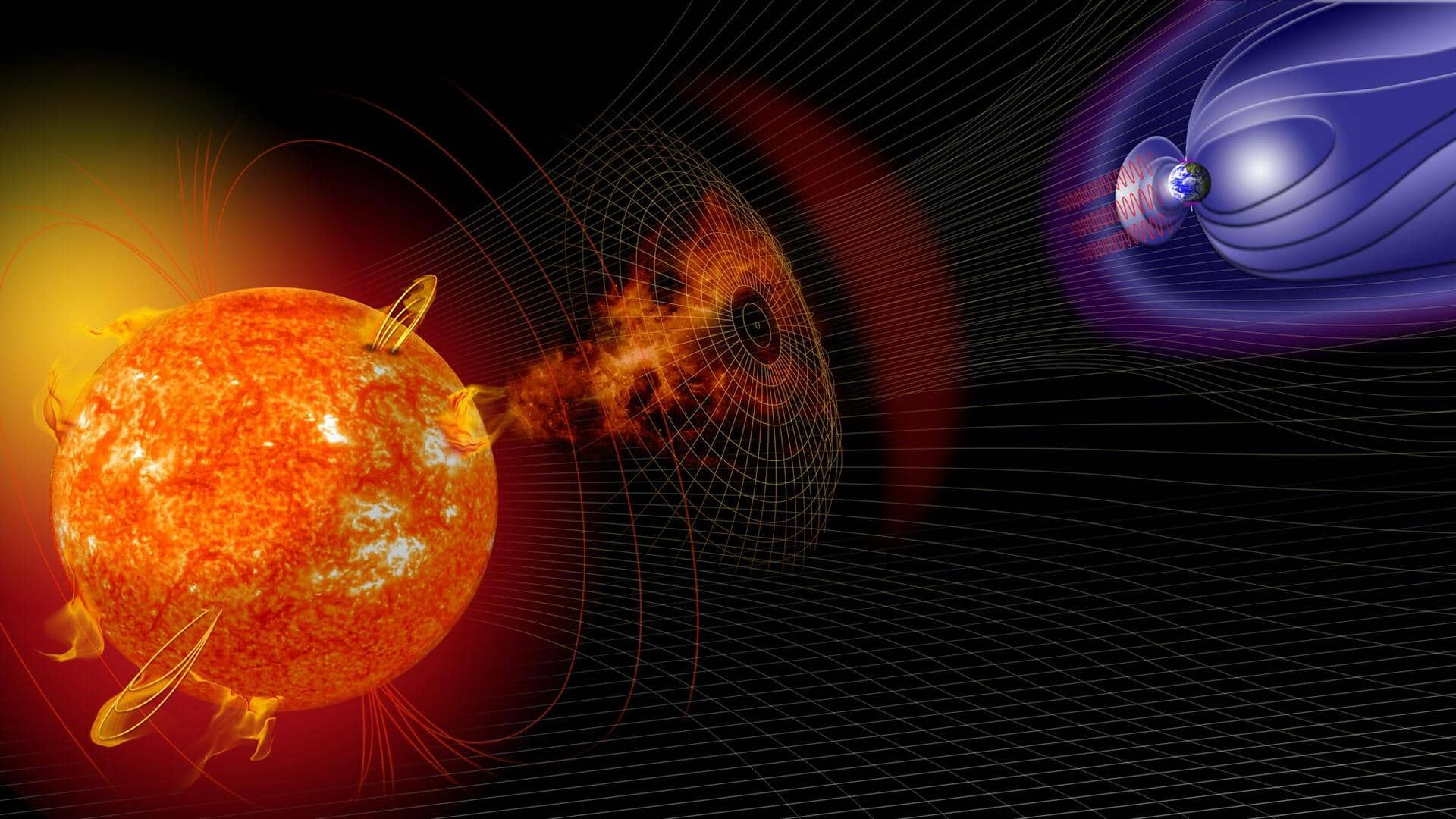
Earth's thermosphere reaches highest temperature in 20 years: Know impact
What's the story
Our planet's thermosphere—which is the second-highest layer of the atmosphere—has now recorded the highest temperature compared to the past two decades. The reason behind this spike is the series of geomagnetic storms that struck Earth this year. That's not all, the thermosphere's temperature is likely to edge higher in the coming years as the Sun's activity increases. Let's see what impact this will have.
Thermosphere
What is Earth's thermosphere?
Earth's atmosphere has five major layers. From lowest to highest, they are the troposphere, stratosphere, mesosphere, thermosphere and exosphere. The thermosphere spreads out across 513km. This layer is sandwiched between the mesosphere, which starts at around 85 kilometers above the Earth's surface, and the exosphere. The exosphere begins at around 600km above the ground, according to NASA. Beyond this layer lies outer space.
Measurements
NASA has been measuring thermosphere's temperatures for over 2 decades
NASA measures the temperature of the thermosphere via infrared radiation released by carbon dioxide and nitric oxide molecules present there. The space agency has been doing so for over 21 years now. Scientists convert data from NASA's TIMED (Thermosphere, Ionosphere, Mesosphere, Energetics, and Dynamics) satellite, into what's called the TCI (Thermosphere Climate Index), which is measured in terawatts.
Values
The TCI value reported in March peaked at 0.24 terawatts
The TCI value reported on March 10 peaked at 0.24 terawatts, per LiveScience. The last time the TCI spiked this high was in December 2003. This was because of the three geomagnetic storms that reached our planet in January and February. These storms are disturbances in Earth's magnetic field brought about by fast-moving magnetized plasma fields from the Sun called coronal mass ejections (CMEs).
Official words
The geomagnetic storms heat up the thermosphere
"These 'storms' deposit their energy in the thermosphere and cause it to heat up," said Martin Mlynczak, part of the TIMED mission. "The increased heating results in increased levels of infrared emission from nitric oxide and carbon dioxide in the thermosphere." Usually following geomagnetic storms, infrared emissions cool the thermosphere. However, if the storms occur back to back—like earlier this year—the temperature remains high.
More storms
Two more intense storms hit Earth after March 10
Since the spike in March, at least two more geomagnetic storms are known to have hit Earth. One was on March 24, which was the most powerful solar storm to strike the planet in over six years. Another one happened on April 24. The TCI values following these storms have remained high but have not yet passed the March peak, Mlynczak said.
Impact
What impact do temperature spikes in the thermosphere have?
The changes in the thermosphere can pose a risk to the satellites positioned in low-Earth orbit. "The thermosphere expands as it warms," explained Mlynczak, resulting in "increased aerodynamic drag on all satellites and on space debris." This increased drag is problematic. It can pull satellites toward Earth ultimately causing them to crash into each other or get displaced out of their orbit.
Event
Geomagnetic storms can cause satellites to fall out of orbits
Increased aerodynamic drag has caused issues before. In February 2022, SpaceX Starlink satellites fell out of orbit after an unpredicted geomagnetic storm. These issues can be avoided if the satellites are pushed to a higher orbit. However, considering that space weather can be extremely unpredictable, it makes it hard for satellite operators to guess when to perform such orbit-raising maneuvers.
Action
Geomagnetic storms are bound to become more frequent
What's concerning is that geomagnetic storms are bound to become more frequent and intense as the Sun inches closer to the peak of its approximately 11-year solar cycle, called the solar minimum. During this time, the Sun blasts several CMEs and eruptions. The next solar maximum is expected to occur in 2025 which suggests that the warming in the thermosphere could continue.